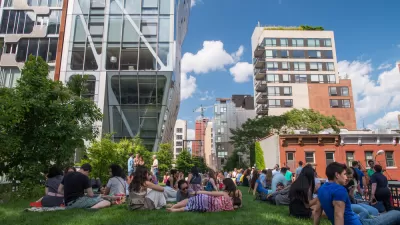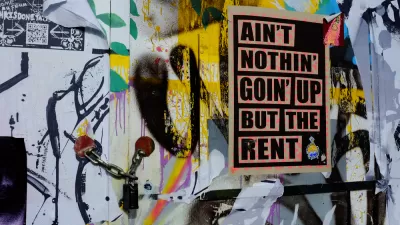Richard Florida reports on why America ranks second to last among first world nations for economic mobility; the Northeast remains the most mobile region of the country.
The American mythology is founded on the idea that the poor, the hungry, and the destitute have the opportunity to rise above one's inherited circumstances and create a new destiny and prosperity from the sheer sweat of one's brow. Despite the persistence of this notion in society, America has become one of the least economically mobile countries in the world. It ranks below Canada, the majority of Europe, Singapore, and Pakistan. In Richard Florida's piece from The Atlantic Cities, he cites information from the New Republic and recent studies from the University of Ottawa, Federal Reserve Bank of Chicago, and the Brookings Institution that all conclude the United States is becoming increasingly connected with income heritability.
When the United States is broken into regional demographics, positive correlations exist between economic mobility and education spending per student, high school and college graduation rates, diversity, higher incomes, and a creative class. States with higher graduation rates, more immigrants, and openness to creativity and difference boasted the greatest economic mobility. Conversely, there is a negative correlation between religion, divorce, and teen pregnancy. States which ranked high in these categories had a low index of economic mobility.
The map is representative of divides between "red" and "blue" states. Although much has been made of the growing income gap and culture gap between these two groups, there is relatively little attention paid to the policy differences between states which foster these exceedingly disparate environments and opportunities between regions. The southern states have empirically trailed behind the Northeast as the economic driver of the nation. In an election year, perhaps it's time to start addressing the causes of this gap instead of declaring a color war.
Thanks to Elaine Mahoney
FULL STORY: Why Some States Are More Economically Mobile Than Others

Study: Maui’s Plan to Convert Vacation Rentals to Long-Term Housing Could Cause Nearly $1 Billion Economic Loss
The plan would reduce visitor accommodation by 25,% resulting in 1,900 jobs lost.

North Texas Transit Leaders Tout Benefits of TOD for Growing Region
At a summit focused on transit-oriented development, policymakers discussed how North Texas’ expanded light rail system can serve as a tool for economic growth.

Why Should We Subsidize Public Transportation?
Many public transit agencies face financial stress due to rising costs, declining fare revenue, and declining subsidies. Transit advocates must provide a strong business case for increasing public transit funding.

How to Make US Trains Faster
Changes to boarding platforms and a switch to electric trains could improve U.S. passenger rail service without the added cost of high-speed rail.

Columbia’s Revitalized ‘Loop’ Is a Hub for Local Entrepreneurs
A focus on small businesses is helping a commercial corridor in Columbia, Missouri thrive.

Invasive Insect Threatens Minnesota’s Ash Forests
The Emerald Ash Borer is a rapidly spreading invasive pest threatening Minnesota’s ash trees, and homeowners are encouraged to plant diverse replacement species, avoid moving ash firewood, and monitor for signs of infestation.
Urban Design for Planners 1: Software Tools
This six-course series explores essential urban design concepts using open source software and equips planners with the tools they need to participate fully in the urban design process.
Planning for Universal Design
Learn the tools for implementing Universal Design in planning regulations.
City of Santa Clarita
Ascent Environmental
Institute for Housing and Urban Development Studies (IHS)
City of Grandview
Harvard GSD Executive Education
Toledo-Lucas County Plan Commissions
Salt Lake City
NYU Wagner Graduate School of Public Service




























